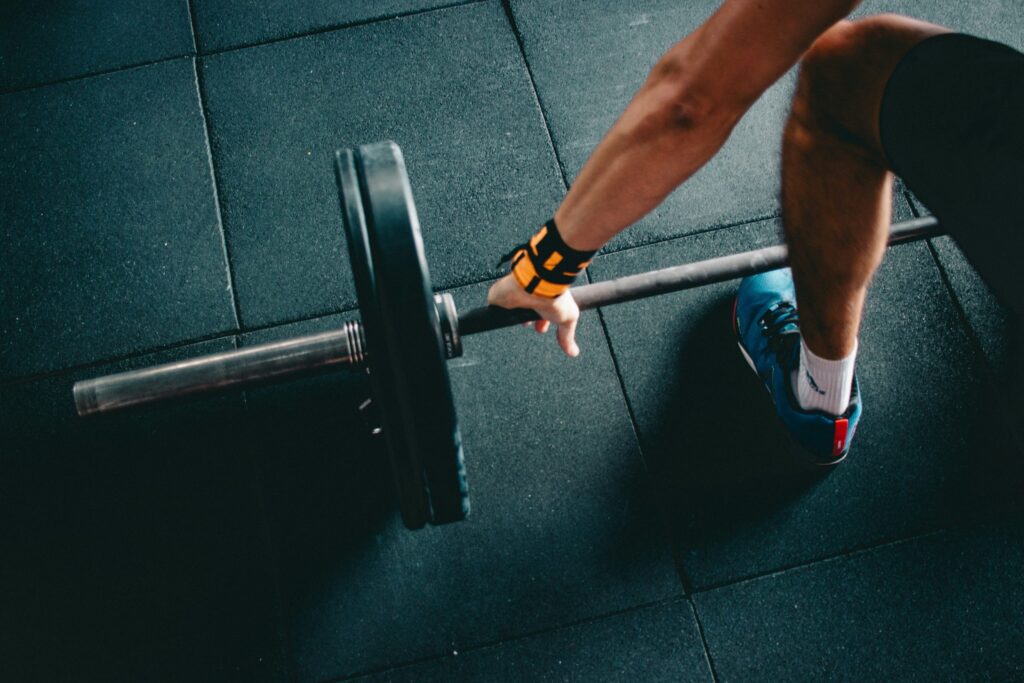Over the last million years or so, we humans have cultivated and finely tuned the instincts that have enabled us to survive and transmit our genes to the next generation, including the will to win. At some point in its long, illustrious history, the world of sports evolved into something more than just “play”. The deeply ingrained need to advance, to shatter our own personal records, and achieve success, perhaps among the most basic tenets in human evolution, can often come at a great cost. When the will to win exceeds the limits of what society considers “fair play”, we face the use and/or abuse of prohibited methods such as gene/blood/mechanical doping. Here we explore the world of competitive sports and the lengths to which some athletes go to ensure that winning edge.
How Did We Get Here?
The use and trafficking of performance-enhancing drugs damages the integrity of sport. Doping, often viewed as a crime committed by an individual, has evolved into just one piece of a larger network of illegal behavior. Victory in professional sports often proves highly lucrative, which only serves to increase the motivation for those individuals inclined to take illegal performance enhancers; unfortunately, coaches, managers and other officials often put pressure on them to do so.
The World Anti-Doping Agency (WADA) defines gene doping as “the non-therapeutic use of genes, genetic elements and/or cells that have the capacity to enhance athletic performance”. By inserting extracellular genetic sequences into specific human tissue, scientists can alter gene activity or foster the expression of a particular protein. This breakthrough in genetics and genomics not only affords the ability to advance the manner in which the medical professionals diagnose and treat diseases – anemia, muscular dystrophy and peripheral vascular diseases, among others — but also holds the potential to enhance human athletic performance.
Legitimate Use
For athletes whose medical situations require the use of a banned drug under a doctor’s watchful eye, anti-doping programs offer a way to request a therapeutic use of exemption (TUE) so that the athlete can take the drug for its originally intended and legitimate purpose. The athlete must have a physician complete a TUE form stating clearly that he needs the drug to treat a specific medical condition, and that an alternative non-banned drug would lack the potency to appropriately treat the condition. The TUE then gets reviewed by a medical committee, which either allows the athlete to take the drug or denies his request.
Many athletes fail to recognize that even some over-the-counter (OTC) medications and supplements may contain banned additives or contaminants. For example, the National Collegiate Athletic Association (NCAA)bans excessive caffeine use, defined as a urine caffeine level above 15μg/ ml. WADA has banned pseudoephedrine (Sudafed) in cases when the urine concentration exceeds 150 mcg/ml, although this drug does fall on the list of substances allowed by the NCAA. Many other such medications and pharmaceuticals that one organization allows may not pass by another’s standards. The onus falls upon the athlete to work closely with his supervising medical team, to determine which drugs he can and cannot ingest during competition.
Ethics and Sportsmanship
Doping within competitive and/or professional sports presents a complex issue, owing to its impact not only on the physical/mental wellbeing of athletes but also on the fairness and public image of athletic competition. Any competitive sports endeavor must align with regulations set forth by ethical codes of conduct; these rules apply to athletes as well as to those who manage their health care, marketing and related business administration. Sadly, adherence sometimes falls short when winning and achieving glory implies a reward that exceeds mere fame and fortune. Such ideals may lead an athlete astray, opting for poor ethical choices which ultimately diminish the intrinsic value of sportsmanship.
Athletes who have signed the WADA code of ethics contract may get called upon randomly for urine and/or blood testing, depending on the substances of concern. The frequency and type of testing varies between sports, largely based upon a variety of factors including history and prevalence of doping in the sport; whether the sport involves endurance, strength or power; substances ingested/injected; and the length of a designated competitive season.
Penalties for a doping violation also vary greatly between sports. In professional endeavors which hold their team members accountable to the WADA Code, a single violation can result in a ban from competition of up to 2 years; a second violation may result in a lifetime ban. The National Hockey League, for example, levies one of the strictest anti-doping violation punishments: a 20-game suspension for a first offense.
Blood Doping and its Risks
Blood doping, the practice of misusing certain techniques and/or substances in an effort to artificially elevate the body’s hemoglobin levels, boosts the blood’s ability to carry more oxygen to the muscles. Illicit use focuses upon three widely- known substances or methods: the administration of erythropoietin (EPO), synthetic oxygen carriers and blood transfusions.
The proper use of these practices within the medical field can help millions of individuals who suffer from either severe blood loss (trauma-induced or related to a surgical procedure) or anemia brought on by kidney disease. Athletes who make note of such medical advances may turn to these options in hopes of improving their stamina and endurance, typically when competing in long-distance cycling and running events. However, misuse of these substances and techniques, especially by athletes who may lack any significant medical knowledge, may lead to a host of serious health complications, including the following:
- Increased cardiac stress (due to the blood getting thicker)
- Formation of blood clots
- Strokes
- Heart attacks
- Pulmonary embolisms
Transfusions also carry the risk of contracting a serious infectious disease such as hepatitis B and/or C, acute lung infections or AIDS. An estimated 20 European cyclists have died as a result of blood doping over the past 25 years. These risks naturally beg the question, “Is winning really worth it?”
Detection Challenges
The International Olympic Committee has prohibited blood doping since the 1980s. After 1999, with the creation of WADA, more formalized crackdown and prohibition of blood doping occurred, with 2004 marking the addition of EPO and other blood doping methods to WADA’s Prohibited List, which already included both autologous and homologous blood transfusion. The previous year, WADA had added the transfer of DNA, RNA, gene-altering substances and any other cellular material to its list of prohibited substances and methods, thereby levying even more stringent regulations against gene doping.
Because of the elusive nature of gene doping — despite research efforts, it continues to prove very difficult to detect — it offers a very attractive option for those individuals inclined to “cheat” when participating in competitive sports. For this reason, developing legal regulations has taken top priority, coupled with the need to find more accurate methods of detection.
Blood doping in micro-dose quantities (reducing the blood doping regime amplitude) challenges even indirect detection by the Athlete Biological Passport, although this relates somewhat to the timing of the sample. However, novel biomarkers continue to emerge, some of which may provide additive value for detection of micro-dose blood doping, such as immature reticulocytes or the iron regulatory hormones hepcidin and erythroferrone. Future studies most likely will focus upon validating these biomarkers for implementation in real-world anti-doping efforts.
Mechanical Doping
The process known as mechanical doping involves the use of hidden devices, such as small motors concealed within bicycles, which can provide a profound advantage to an athlete. Tiny electric motors, hidden inside the frame of a bicycle, the seat tube or the rear wheel hub, work in tandem with batteries and other control systems, enabling activation of the motors to provide additional power. This system enables a cyclist to ride faster while at the same time allowing him to expend less effort. The type and size of the battery determine the amount/duration of additional power delivered to assist the rider, while control systems turn the motor on and off. Some cyclists disguise these switches as part of the handlebars; sometimes they get activated via remote control through a wireless remote hidden within the competitor’s clothing. Even cadence sensors, which detect pedaling rate, may automatically activate a motor to enhance performance.
Mechanical doping also found a niche with runners in 2019, upon the introduction of Nike’s ZoomX Vaporfly running shoe. The shoe company considers this the fastest shoe it has ever created. Somewhat of a misnomer, since the shoe itself does not necessarily make runners faster, its midsole carbon fiber plates and spring -back foam potentially give runners the ability to take longer strides while exerting the same amount of energy. This difference can translate to increased speed, leading to new personal bests and other record-breaking times. In 2020, a version of the shoe containing triple carbon plates surrounded by ultra-compressed foam held the dubious honor of becoming the first shoe officially banned from Olympic competition.
Mechanical Doping Regulations Abound
The Union Cycliste Internationale, the worldwide governing body for cycling, places stringent regulations against mechanical doping. This relates directly to the ease of detection, accomplished by scanning bicycles for devices before, during, and after competition. Thermal imaging cameras can also detect anomalies within both the structure of a bicycle as well as the materials inherent in its construction; atypical heat patterns will indicate the presence of any illegal device such as a motor or battery concealed within a bicycle’s frame.
The Tainted World of Racehorses
Animal geneticist Edward Ryder, who studies gene doping detection at the biotechnology company LGC, found that gene doping occurs with increasing regularity among racehorses. Unlike humans, who can consent to experimental and risky treatments, “horses cannot advocate for themselves and refuse treatment,” Ryder said.
Although transgenes in horses have not yet appeared in most competitive arenas, the accessibility of gene doping seems easily within reach, with gene editing carried out in the germline, said Ryder, who works closely with the British Horseracing Authority. Researchers recently reported the birth of some gene-altered horses capable of superb athletic performance, underscoring the need for improved methods for detecting potential genetic modifications.
While muscle biopsies remain the most reliable way to identify transgenes in both humans and horses, today’s scientists strive to develop less invasive tools, such as those based on detecting DNA fragments that leak into the bloodstream after exercise-induced muscle breakdown. With this advantage, testing an athlete or horse’s blood after a competitive event can help pinpoint the presence of transgenes.
The Pro/Con Issue Inherent in Gene Therapy
Progress of research on gene therapy and its ensuing clinical trials continues to help mitigate serious and life-threatening health concerns; however, at the same time, it significantly increases the possibilities of gene doping in sports. If we stop and consider the implications carried by this new method of doping – the creation of a “super athlete” and lucrative professional sports – we begin to realize the complexity of the situation.
The introduction of new scientific delivery methods, including ex vivo gene transfer to allogeneic stem cells, considerably accelerates the ease of gene doping in sports. However, as tempted as some “driven to win” athletes find themselves, these manipulations carry with them a tremendous amount of risk. The transmission of foreign genes into the genome can cause numerous – and potentially not yet fully understood or recognized – interactions between genes and internal/environmental modulators.
In contrast to gene therapy, always carried out under strictly controlled conditions, successful gene doping can occur in the total absence of security and protective measures. Vectors for gene transfer produced in uncontrolled laboratory conditions may carry biological or chemical contaminants which can unwittingly endanger the health and life of an athlete. Sadly, despite the documented and unpredictable risks associated with gene doping, some athletes simply choose to ignore safety issues.
References
https://www.britannica.com/science/doping
https://www.webmd.com/fitness-exercise/blood-doping
https://pubmed.ncbi.nlm.nih.gov/36229224/
https://pmc.ncbi.nlm.nih.gov/articles/PMC4203840/
https://www.the-scientist.com/what-is-gene-doping-in-sports-and-how-can-experts-detect-it-73016
https://pubmed.ncbi.nlm.nih.gov/22030863/
https://pubmed.ncbi.nlm.nih.gov/30177618/



